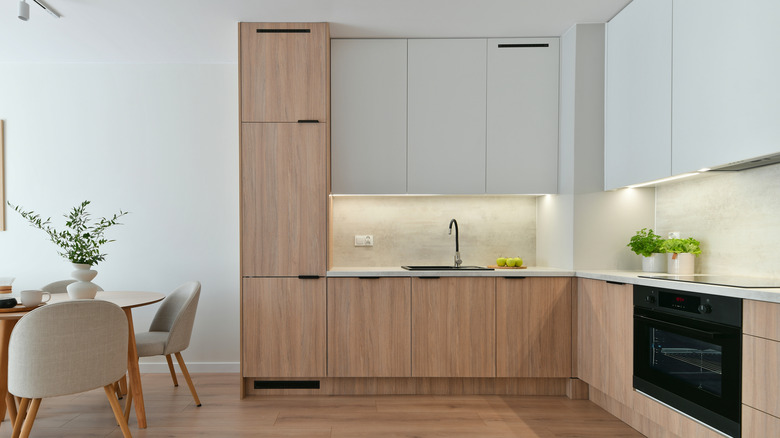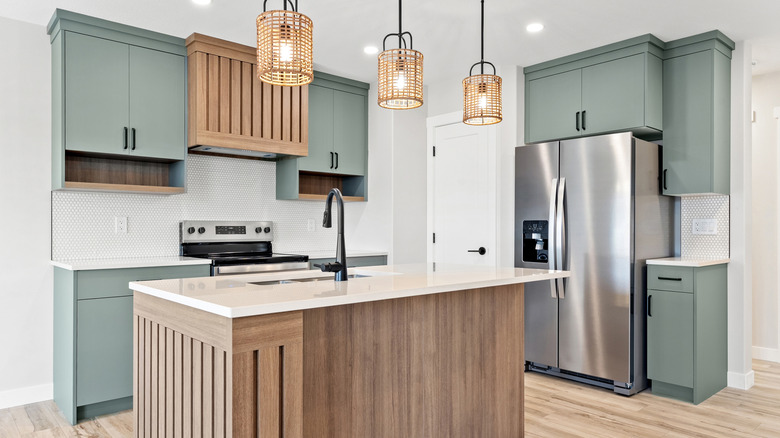The Subtle Way To Add A Touch Of Rustic, Natural Wood To The Kitchen
When the National Kitchen and Bath Association (NKBA) polled designers, architects, builders, and dealers on what design trends they believed would dominate the industry for the next three years, they predicted that homeowners would embrace multifunctional spaces, statement lighting, and a connection to nature. One way designers believe that connection will be made is through the use of warm, natural wood finishes on cabinets, floors, and even lighting. They aren't suggesting that kitchens will be solely made of wood, but that natural finishes will be used as a contrast to, or a backdrop for, other materials like stainless steel and stone. While some kitchen island trends are outdated, an unpainted wood island is one subtle, on-trend way to add a natural rustic touch to your kitchen.
Kitchen islands come in a remarkable range of shapes and sizes. They can be dedicated to prep work, or a kitchen island can be designed for entertaining. They're available prefab, or you can have one custom built. Painted islands, countertops, and cabinets can all create a safe, cohesive design that's fairly timeless, as long as they're not overly ornamented with things like mini-columns or intricate scroll work. Breaking away from the traditional by leaving a natural wood finish on your kitchen surfaces appeals to our desire for connection to nature, a trend that's been dubbed biophilic design.
Getting the look of a natural wood kitchen island
Islands are a prominent fixture in kitchens, so when you use a natural wood finish on your kitchen island, the color, grain, and texture become critical to the room's overall design. Scandinavian style, simple and natural, relies on light-colored wood like oak, ash, and beech. The dark, chocolaty hue of walnut also works with most kitchen styles. You can design a walnut kitchen with clean, straight lines for a modern feel, or dress it up with trims and moldings for a traditional kitchen. Even plywood can be cut into planks, reassembled, and stained to resemble a rustic kitchen island perfect for a cabin.
On cabinets and islands, unfinished wood must be treated to protect it from day-to-day kitchen life. Avoid the stain colors that resemble paint or mask the wood's natural grain. Instead, choose a wood stain color that complements the kitchen decor. Two-tone cabinets, where the lower is a dark finish and the upper rows are light, remain in style, and matching the island to the lower cabinets can also tie the room together. Keep in mind that you don't have to use a stain that's named after the wood you've used, like walnut color on walnut wood. Walnut is an expensive wood, but you can stain a more budget-friendly wood like maple a walnut shade. You can also let the wood shine in its natural state by using a topcoat that protects it without masking the color.

